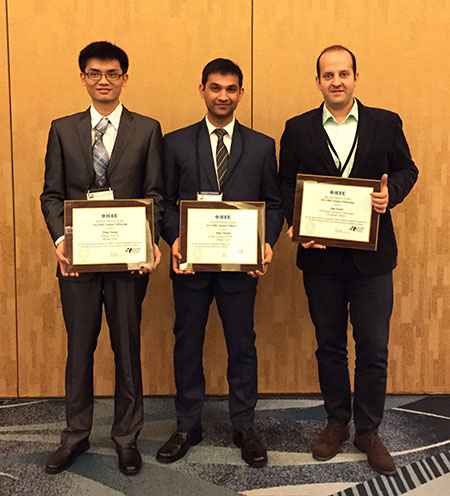Doctoral student received a prestigious IEEE award
Sam Vaziri, Doctoral student at School of Information and Communication Technology has received the prestigious IEEE award of Electron Devices Society PhD Student Fellowship.

Every year, IEEE award of Electron Devices Society PhD Student Fellowship are awarded to three outstanding candidates from all over the world for the demonstration of significant ability to perform independent research and a proven record of academic excellence. Sam Vaziri, doctoral student at KTH School of Information and Communication Technology was one of the three students who received the award in 2014. The award announcement took place in San Francisco, in December and the price included 5000 US Dollars plus a travel fund to USA. Sam Vaziri is pursuing his doctoral studies at the department of Integrated Devices and Circuits under supervision of Professor Mikael Östling. His current research activities encompass graphene and other 2D-material technology for electronic and optoelectronic devices.
Why do you think you were chosen as one of the three to get the award?
– I think my grades, the number of papers I authored and co-authored (25), and the number of citations (180) to my publications played a major role in winning the award. Of course, the strong recommendation letters from those who have been working with me contributed significantly to why I was chosen for this fellowship. I also would like to thank my supervisor professor Mikael Östling who nominated me for this award.
What does it mean to you to receive this award?
– I truly feel honored to receive such a prestigious award. This means added motivation and commitment in my research and future carreer. In addition, receiving this award increases the visibility of my research which could further help to exchange more ideas and to initiate more collaborations within the electron devices community.

